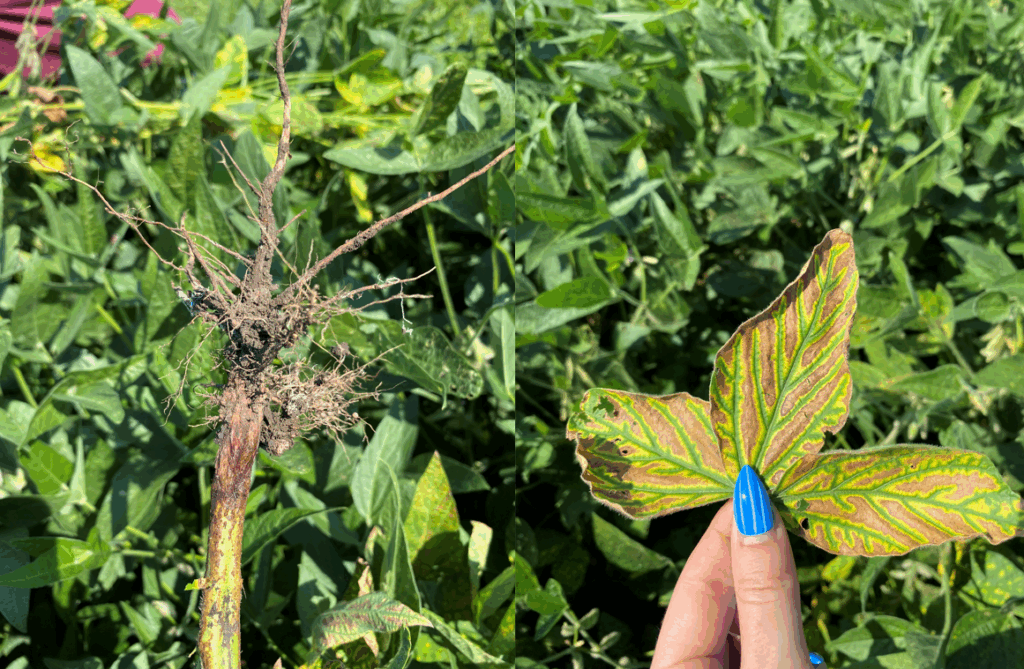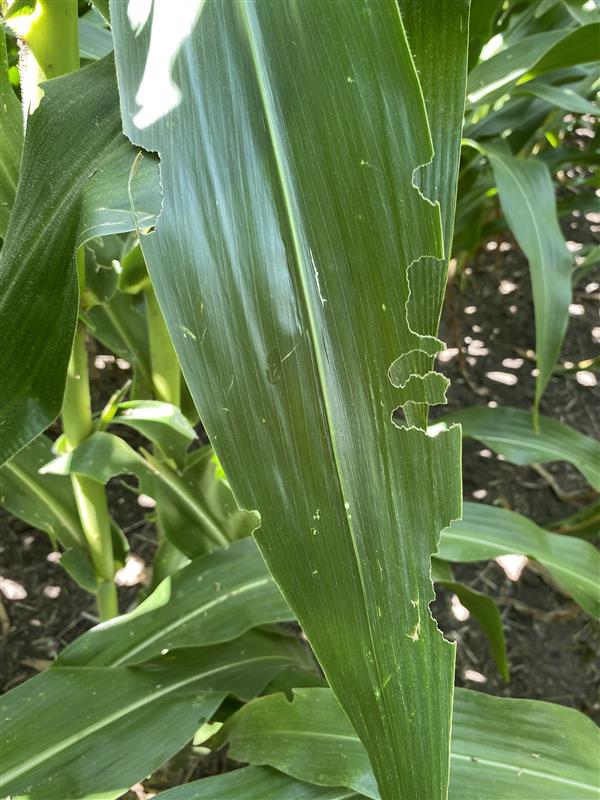
Darby Danzl
Regional Technical Agronomist
darby.danzl@ilsoy.org

Darby Danzl
Regional Technical Agronomist
darby.danzl@ilsoy.org
Darby Danzl UPDATES


The beans are TALL as they enter the mid-R stages of growth. All fields I scouted this week were between R3 and R5 (beginning pod to beginning seed), depending on planting date. Corn is currently around the R3 to R4 (milk to dough) stage.
Stephanie and I saw some red crown rot in soybean fields around the Shelby/Macon County area, specifically in fields where she found it two years ago. The disease shows very visible symptoms, including yellowing and browning between the leaf veins (interveinal necrosis) as well as reddish discoloration at the base of the plant near the root. When you look at the root of a soybean plant infected with red crown rot, you’ll often notice white fungal growth (mycelia). Warm soil temperatures (77–86°F) are ideal for this fungus to thrive, so the recent warm days have likely contributed to its presence.
High 80s low 90s this week and looks like next week as well.
We’re starting to get a little dry, as it’s been a while since we had a good rain. It’s not too concerning for soil moisture levels just yet, though.
R3-R5, Double crop beans in McLean county are at V4.
R3-R4
I set up sticky traps last Wednesday to monitor for corn rootworm beetles in a cornfield in McLean County, but I didn’t see any on the traps when I replaced them this Wednesday. I did see some grasshopper feeding near one of the traps.
Red crown rot has appeared in some fields in Shelby and McLean counties. I’m still seeing some southern rust, along with corn leaf miner and Goss’s wilt, but mostly as isolated cases within the field.


 and then
and then